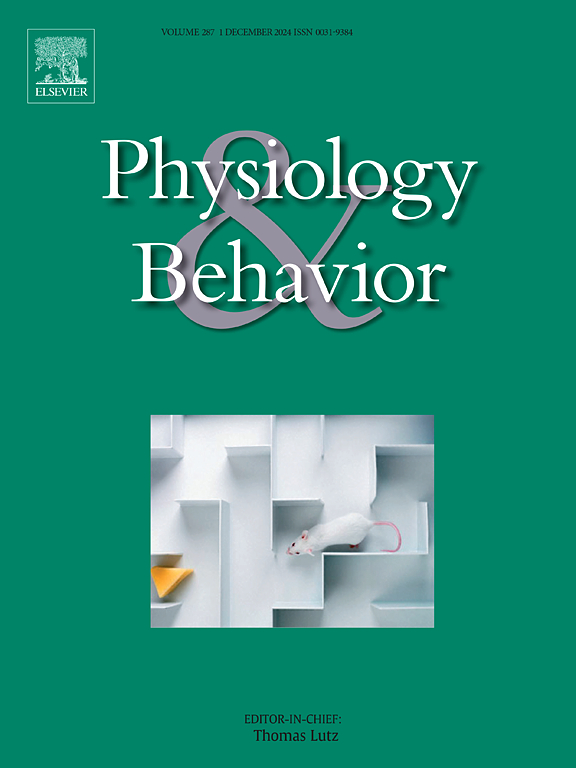Psychophysiological and emotional antecedents of on-sight climbing performance with alterations in the style of ascent
IF 2.5
3区 医学
Q2 BEHAVIORAL SCIENCES
引用次数: 0
Abstract
Background
Lead climbing has been speculated to be a significant source of stress for rock climbers, presumably due to the potential for and perceived consequences of a lead fall. The aim of this study was to investigate psychophysiological, and emotional and performance differences with a randomised series of on-sight climbs with different ascent styles. Cardiovascular reactivity, a repeated measures design and performance assessments were used to build upon previous research.
Methods
32 intermediate climbers attempted three separate routes, on-sight, identical in difficulty, but utilizing different safety protocols: top-rope, lead or lead with run-out. Measurements of climbing performance (technique, tactics, etc.), psychophysiological (heart rate, cardiovascular reactivity, cortisol, etc.) and psychometric (somatic and cognitive anxiety, self-confidence) variables were taken pre- and post-receiving the task instructions; and before, during and after climbing for each ascent.
Results
Versus top-rope, lead and run-out ascents were characterised by (a) reduced performance quality (less fluent movement and increased geometric entropy (p < 0.005)); (b) significantly increased cognitive anxiety (p = 0.002) in both lead ascents and reduced self-confidence (p = 0.001), and greater somatic anxiety specifically in the run-out ascent (p = 0.011); and (c) no significant differences in salivary cortisol or pre-climb heart rate from baseline.
Conclusion
The results suggested that an increased likelihood of a climber falling was likely to be evaluated as threatening, elicit a negative emotional response and disrupt performance. Interventions addressing lead climbing anxiety should focus on reducing cognitive anxiety and improving self-confidence in order to reduce deterioration in performance occurring in intermediate climbers and improve enjoyment.
随著攀爬方式的改变,现场攀爬表现的心理、生理及情绪前因。
背景:引线攀岩被推测为攀岩者压力的重要来源,可能是由于引线坠落的潜在和可感知的后果。本研究的目的是通过一系列随机的不同攀登方式的现场攀登来调查心理、生理、情绪和表现上的差异。心血管反应性、重复测量设计和性能评估是在先前研究的基础上进行的。方法:32名中级攀登者尝试三条不同的路线,在视线范围内,难度相同,但采用不同的安全方案:顶绳,领先或领先跑出。在接受任务指令前后分别测量攀爬表现(技术、战术等)、心理生理(心率、心血管反应性、皮质醇等)和心理测量(躯体和认知焦虑、自信等)变量;在每次攀登之前、期间和之后。结果:与顶绳攀爬相比,铅绳攀爬和跑绳攀爬的特点是:(a)性能质量降低(运动不流畅,几何熵增加)。结论:结果表明,攀爬者摔倒的可能性增加,可能被评估为具有威胁性,引发负面情绪反应,并破坏性能。解决攀爬焦虑的干预措施应侧重于减少认知焦虑和提高自信,以减少中级攀爬者表现的恶化,提高乐趣。
本文章由计算机程序翻译,如有差异,请以英文原文为准。
求助全文
约1分钟内获得全文
求助全文
来源期刊

Physiology & Behavior
医学-行为科学
CiteScore
5.70
自引率
3.40%
发文量
274
审稿时长
47 days
期刊介绍:
Physiology & Behavior is aimed at the causal physiological mechanisms of behavior and its modulation by environmental factors. The journal invites original reports in the broad area of behavioral and cognitive neuroscience, in which at least one variable is physiological and the primary emphasis and theoretical context are behavioral. The range of subjects includes behavioral neuroendocrinology, psychoneuroimmunology, learning and memory, ingestion, social behavior, and studies related to the mechanisms of psychopathology. Contemporary reviews and theoretical articles are welcomed and the Editors invite such proposals from interested authors.
 求助内容:
求助内容: 应助结果提醒方式:
应助结果提醒方式:


